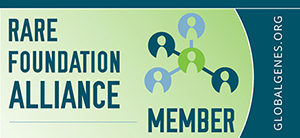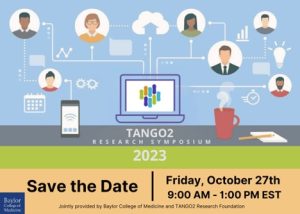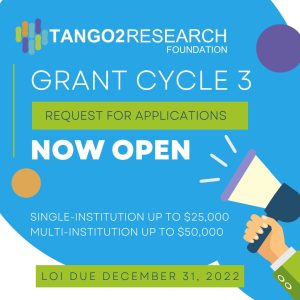TANGO2 DEFICIENCY DISORDER
- What is TANGO2?
- What is TANGO2 deficiency disorder?
- What causes TANGO2 deficiency disorder?
- Diagnosis
- Treatment
What is TANGO2?
TANGO2 itself is a protein coding gene on chromosome 22 (22q11.21). This gene belongs to the transport and Golgi organization family, whose members are predicted to play roles in secretory protein loading in the endoplasmic reticulum.

What is TANGO2 deficiency disorder
Also known as TANGO2 disease, TANGO2-related disorder, TANGO2-related deficiency disorder, TANGO2 disease, TANGO2-Related Metabolic Encephalopathy and Arrhythmia.
TANGO2-related disease is a rare genetic disorder caused by variants in the TANGO2 gene. Affected individuals experience episodes of acute illness called metabolic crises. These episodes can be triggered, often by a preceding infection or from not eating for an extended period of time (fasting). Irregularities in the rhythm of the heart (arrhythmias), the breakdown of muscle tissue (rhabdomyolysis), and other complications can occur during an episode. The term encephalopathy is a general term for brain disease. Neurological problems including intellectual disability and delays in reaching developmental milestones can occur. Additional signs and symptoms can occur both within and outside of metabolic crisis. TANGO2-related metabolic encephalopathy and arrhythmias can affect people very differently. There is no cure for the disorder, but research is underway to better understand and treat this disease. Current treatment is aimed at the specific symptoms present in each individual.
What causes TANGO2 deficiency disorder?
TANGO2-related metabolic encephalopathy and arrhythmias is caused by variations in the transport and Golgi organization 2 (TANGO2) gene. Genes provide instructions for creating proteins that play a critical role in many functions of the body. When a mutation of a gene occurs, the protein product may be faulty, inefficient, absent, or overproduced. Depending upon the functions of the particular protein, this can affect many organ systems of the body, including the brain. Researchers are not sure what the protein produced (encoded) by the TANGO2 gene does. It may have a role in secretory protein loading within the endoplasmic reticulum, which is an extensive membrane network found within certain cells where proteins are processed.
The penetrance of disease causing variations in the TANGO2 gene is believed to be 100%. That means everyone who has disease causing changes in both copies of the TANGO2 gene will eventually develop some type of associated sign or symptom of the disorder. Variations in this gene also have variable expressivity, which means the signs and symptoms can differ among affected individuals. Consequently, the severity of the disorder will vary among affected individuals.
Genetic diseases are determined by the combination of genes for a particular trait that are on the chromosomes received from the father and the mother. Disorders inherited in a recessive pattern occur when an individual inherits two variants in a gene for the same trait, one from each parent. If an individual receives one normal gene and one gene for the disease, the person will be a carrier for the disease, but usually will not show symptoms. The risk for two carrier parents to both pass the defective gene and, therefore, have an affected child is 25% with each pregnancy. The risk to have a child who is a carrier like the parents is 50% with each pregnancy. The chance for a child to receive normal genes from both parents and be genetically normal for that particular trait is 25%. The risk is the same for males and females.
Diagnosis
A diagnosis of TANGO2-related metabolic encephalopathy and arrhythmias is based upon identification of characteristic symptoms, a detailed patient history, a thorough clinical evaluation and a variety of specialized tests. Diagnostic criteria for this disorder have not yet been established.
Clinical Testing and Workup
Most individuals are diagnosed through molecular genetic testing. Molecular genetic testing can detect a variation in the TANGO2 gene known to cause TANGO2-related metabolic encephalopathy and arrhythmias, but is available only as a diagnostic service at specialized laboratories.
An advanced imaging techniques magnetic resonance imaging (MRI) of the brain may also be performed. An MRI uses a magnetic field and radio waves to produce cross-sectional images of particular organs and bodily tissues, including the brain. Physicians use an MRI to obtain a detailed image of a major region of the brain called the cerebrum. Some affected individuals have shown reduced size of the cerebrum within the skull (cerebral volume loss).
Other tests may be performed to assess specific symptoms. For example, if seizure activity is seen or suspected – body shaking or staring spells, physicians may recommend an electroencephalogram (EEG), which is a test that measures the electrical activity of the brain and may show changes in brain function.
Treatment
The treatment of TANGO2-related metabolic encephalopathy and arrhythmias is directed toward the specific symptoms that are apparent in each individual. Treatment may require the coordinated efforts of a team of specialists. Pediatricians, physicians who specialize in the diagnosis and treatment of metabolic disease in children (pediatric metabolic physicians and geneticists), heart arrhythmias in children (pediatric cardiologists and electrophysiologists), intensive care physicians who specialize in taking care of children in intensive care units, physicians who are experts in the diagnosis and treatment of the brain and central nervous system in children (pediatric neurologists), physicians who specialize in the diagnosis and treatment of hypothyroidism (pediatric endocrinologists), specialists who asses and treat hearing problems (audiologists), and other healthcare professionals may need to systematically and comprehensively plan treatment. Genetic counseling may be of benefit for affected individuals and their families. Psychosocial support for the entire family is essential as well.
There are no standardized treatment protocols or guidelines for affected individuals. Due to the rarity of the disease, there are no treatment trials that have been tested on a large group of patients. Various treatments have been reported in the medical literature as part of single case reports or small series of patients. Treatment trials would be very helpful to determine the long-term safety and effectiveness of specific medications and treatments for individuals with TANGO2-related metabolic encephalopathy and arrhythmias.
A metabolic crisis is a medical emergency that requires prompt treatment. This can include aggressive hydration to treat rhabdomyolysis. Sometimes, sodium bicarbonate-containing fluid may be considered as adjunct therapies. An adjunct therapy is any additional therapy that is used along with the primary treatment option (in this instance aggressive hydration). In some instances, hemodialysis may be necessary if there is severe fluid overload or irregularities with electrolyte balances. Hemodialysis is a procedure in which a machine is used to perform the kidney’s basic functions of fluid and waster removal. Hemodialysis does not remove myoglobin and is not an effective therapy for myoglobin accumulation associated with rhabdomyolysis.
During a metabolic crisis, physicians should monitor electrolyte levels. Electrolytes are certain salts and minerals that may be found in the body. Affected individuals should be monitored for normal levels of potassium, magnesium, and glucose.
During a metabolic crisis, treatment of heart rhythm abnormalities can differ depending on the specific type of ECG abnormality that is present. Because nearly all children in crisis have QT prolongation, all drugs that prolong the QT interval should be avoided. Magnesium should be used to maintain levels above 2 mg/dl
and if cardiac function is preserved, esmolol may be tried. However, arrhythmias degenerate rapidly and any child with premature ventricular contractions (PVCs) should be immediately transferred to an intensive care unit. Single PVCs can be treated with esmolol and magnesium but any higher grade arrhythmias or ventricular tachycardia appears to respond best to isoproterenol. Atrial pacing can also be used.
Recurrent ventricular tachycardia or torsade de pointes can be treated by cardioversion but will typically recur. As soon as ventricular tachycardia or torsade de pointes is seen, isoproterenol should be considered and quickly administered if possible. Cardiac dysfunction may limit the use of this drug. Cardioversion is a method of restoring heart rhythm to normal, either through electrical shock or with specific medications. Direct current cardioversion is a procedure in which a small electrical charge is delivered to the heart in order to “shock” it back to normal rhythm. Although at this time isoproterenol appears to be the most effective drug choice for ventricular tachycardia, death has occurred despite its use. Because researchers do not completely understand the underlying reason that arrhythmias occur in this disorder, the ideal treatments for heart rhythm problems is not known.
Individuals who have had ventricular arrhythmias may receive an implantable cardioverter defibrillator (ICD). These small devices are implanted under the skin of the chest and wires are passed down into the heart to monitor the heart rhythm. The device detects episodes of heart rhythm irregularity and delivers an electrical shock to restore normal heart rhythm. ICDs do not prevent the occurrence of torsade de pointes and thus acute arrhythmias need to be managed with antiarrhythmic medications. Because arrhythmias appear to only occur during metabolic crisis and because these medications can cause hypoglycemia, whether or not to take prophylactic or daily antiarrhythmic medications is unknown. Some individuals have undergone a cardiac sympathectomy, a surgical procedure in which certain nerves going to the heart are cut or clamped. Whether or not this is an effective treatment is not known. An ICD is a therapy that carries significant medical and psychological complications, especially in younger individuals, and should be undertaken only after detailed consultation with appropriate medical personnel experienced in the management of heart rhythm abnormalities and a careful consideration of the risks and benefits.
Hypothyroidism may be treated with a medication called levothyroxine. This medication replaces or provides more of the thyroid hormone that affected individuals are lacking. Seizures may be treated with anti-seizure medications called anti-convulsants or anti-epileptics.
Affected children may benefit from occupational, physical, and speech therapy. Additional medical, social, and/or vocational services including specialized learning programs may be necessary.








